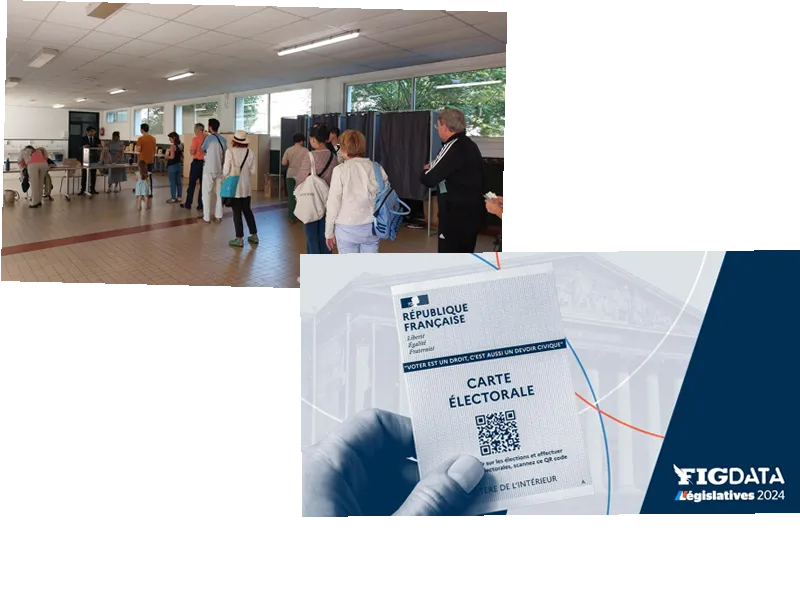The voters of Seine-Saint-Denis have shown a significant increase in participation in the first round of the early legislative elections. At 5 p.m. on Sunday, the participation rate was 47.04%, nearly 20 points higher than the 27.72% observed at the same time during the 2022 legislative elections. This surge in voter turnout is notable in a department typically characterized by high abstention rates.
At noon, the department already showed a participation rate of 17.93%, compared to 9.85% in the first round of the 2022 legislative elections. Although still one of the lowest participation rates in the Paris region, it is comparable to midday figures in Hauts-de-Seine and Val-de-Marne. Similarly, Essonne observed an increase in participation, with 20.68% of voters turning out by noon, up from 12.77% in the previous legislative elections.
This trend in Seine-Saint-Denis aligns with a broader pattern in the popular towns of Île-de-France, where voter turnout is generally low. The prospect of the Rassemblement National (RN) gaining governmental power seems to have motivated many residents to cast their votes, aiming to prevent a shift towards the far-right.
In the affluent city of Raincy, voter turnout reflects a mix of political preferences. Sylvie, a teacher in her fifties, voted for Jérôme Legavre, the LFI candidate and outgoing MP. Despite Raincy's reputation as a 'separatist enclave' due to its higher standard of living, the city previously leaned towards the government majority in legislative elections and the far-right in European elections. Jordan Bardella (RN) had secured a significant lead there, leaving the Insoumis candidate far behind.
At the other end of the department, in the 1st constituency (Saint-Denis Sud, Saint-Ouen), outgoing deputy Éric Coquerel anticipates a final participation rate of 'at least 55%', which would be 30% higher than in 2022. Coquerel notes a strong presence of young voters and an emerging generation highly interested in political life.
The overall participation rate at noon across France stood at 25.90%, according to the Ministry of the Interior. This represents a 7.47-point increase from the same time in the 2022 legislative elections and a 6.09-point rise from the European elections held three weeks prior. Departments like Aveyron, Bouches-du-Rhône, and Gers saw the highest mobilization rates, while Seine-Saint-Denis, Val-de-Marne, and Hauts-de-Seine had lower turnout figures.
- The increased voter turnout in Seine-Saint-Denis and other departments could significantly impact the election results. Candidates who came in third or fourth place in the first round have the opportunity to remain in the second round if they secure 12.5% of the registered votes, or 25% if the participation rate reaches 50%.
- This dynamic could lead to either duels or triangular contests, potentially altering the political landscape of the constituencies. The heightened participation rates reflect a growing engagement among the electorate, particularly among younger voters, which could shape future political trends.






